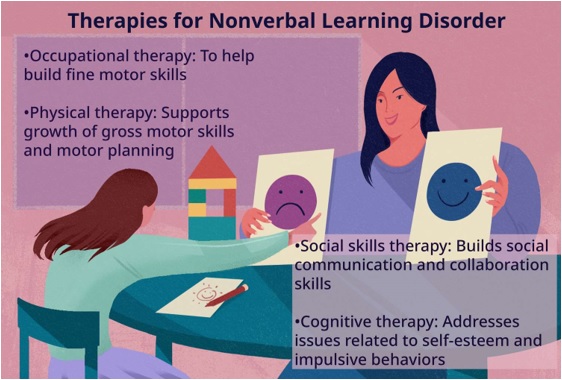Understanding Non-Verbal Disorder And Its 5 Confusing Signs
30th June 2023

Nonverbal Learning Disorder (NVLD) is a neurodevelopmental condition that affects how individuals process and interpret nonverbal cues and social interactions. While it is not yet officially recognized in the Diagnostic and Statistical Manual of Mental Disorders (DSM-5), NVLD is gaining attention as a distinct learning disability. Read on to explore what NVLD entails and delve into five confusing symptoms of nonverbal learning disabilities.
Understanding Nonverbal Learning Disorder (NVLD)

Source: nvld.org
Nonverbal Learning Disorder primarily affects the right hemisphere of the brain, responsible for processing nonverbal information. Although individuals with NVLD usually have average or above-average verbal skills, they often struggle with nonverbal cues such as body language, facial expressions, and tone of voice. This difficulty can lead to misinterpretation of social situations, impaired social skills, and problems with motor coordination.
Five Confusing Signs of Nonverbal Learning Disabilities

Source: www.verywellhealth.com
Here are some signs of nonverbal learning disabilities that might leave you scratching your head:
1. Social Interaction Challenges
Individuals with NVLD often face difficulties in social situations. They may struggle to understand nonverbal cues, such as body language or facial expressions, and have difficulty recognizing and responding appropriately to emotions. This can result in social isolation, miscommunication, and feelings of anxiety or confusion during interpersonal interactions.
2. Poor Motor Skills
Motor coordination problems are common among those with NVLD. They may struggle with activities such as tying shoelaces, riding a bicycle, or catching a ball. Fine motor skills, such as handwriting, may also be affected. These difficulties can impact daily activities and lead to frustration and low self-esteem.
- Spatial Awareness Challenges
Individuals with NVLD often struggle with spatial awareness and visual-spatial skills. They may have difficulty understanding and navigating maps, understanding left and right, or organizing objects in space. These challenges can make it challenging to follow directions, navigate new environments, or complete tasks that require spatial reasoning.
- Difficulty with Transitions and Organization
Individuals with NVLD may have difficulty transitioning from one activity to another or adapting to changes in routine. They may struggle with planning, organizing, and prioritizing tasks, leading to difficulties with time management and completing assignments. These difficulties can impact academic performance and day-to-day functioning.
- Literal Interpretation and Difficulty with Abstract Concepts
People with NVLD often tend to interpret information literally, which can affect their understanding of humor, sarcasm, idioms, and metaphors. Abstract concepts may be challenging to grasp, leading to difficulties in subjects like math or understanding complex social situations. This literal interpretation can create misunderstandings and make it difficult for them to connect with others effectively.
Don’t Assume, Identify!
Nonverbal Learning Disorder (NVLD) is a neurodevelopmental condition that affects how individuals process and interpret nonverbal cues and social interactions. It can manifest in various ways, including challenges in social interactions, motor skills, spatial awareness, transitioning, and abstract thinking. Recognizing the signs of NVLD is crucial for early identification and intervention to support individuals with this condition. Thus, pursuing Online Special Education Courses in Malaysia can help you understand their unique needs, and create a more inclusive and supportive environment for individuals with nonverbal learning disabilities.






